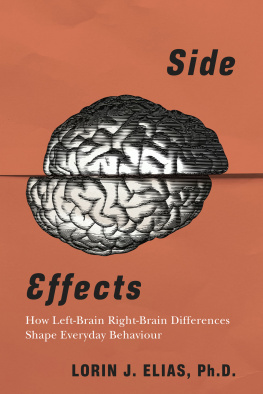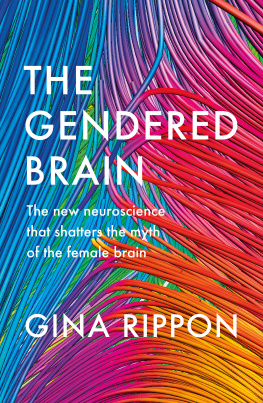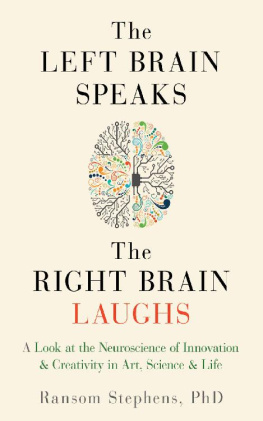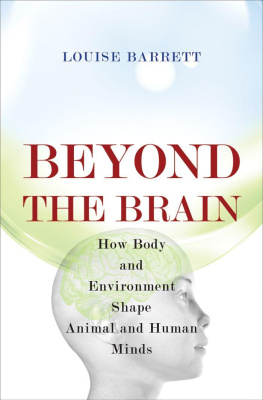Lorin J. Elias - Side Effects: How Left-Brain Right-Brain Differences Shape Everyday Behaviour
Here you can read online Lorin J. Elias - Side Effects: How Left-Brain Right-Brain Differences Shape Everyday Behaviour full text of the book (entire story) in english for free. Download pdf and epub, get meaning, cover and reviews about this ebook. City: Toronto, year: 2022, publisher: Dundurn Press, genre: Science. Description of the work, (preface) as well as reviews are available. Best literature library LitArk.com created for fans of good reading and offers a wide selection of genres:
Romance novel
Science fiction
Adventure
Detective
Science
History
Home and family
Prose
Art
Politics
Computer
Non-fiction
Religion
Business
Children
Humor
Choose a favorite category and find really read worthwhile books. Enjoy immersion in the world of imagination, feel the emotions of the characters or learn something new for yourself, make an fascinating discovery.
- Book:Side Effects: How Left-Brain Right-Brain Differences Shape Everyday Behaviour
- Author:
- Publisher:Dundurn Press
- Genre:
- Year:2022
- City:Toronto
- Rating:3 / 5
- Favourites:Add to favourites
- Your mark:
Side Effects: How Left-Brain Right-Brain Differences Shape Everyday Behaviour: summary, description and annotation
We offer to read an annotation, description, summary or preface (depends on what the author of the book "Side Effects: How Left-Brain Right-Brain Differences Shape Everyday Behaviour" wrote himself). If you haven't found the necessary information about the book — write in the comments, we will try to find it.
Human behaviour is lopsided. When cradling a newborn child, most of us cradle the infant to the left. When posing for a portrait, we tend to put our left cheek forward. When kissing a lover, we usually tilt our head to the right. Why is our behaviour so lopsided and what does this teach us about our brains? How have humans instinctively used this information to make our images more attractive and impactful? Can knowing how left-brain right-brain differences shape our opinions, tendencies, and attitudes help us make better choices in art, architecture, advertising, or even athletics?
Side Effects delves into how lateral biases in our brains influence everyday behaviour and how being aware of these biases can be to our advantage.
Lorin J. Elias: author's other books
Who wrote Side Effects: How Left-Brain Right-Brain Differences Shape Everyday Behaviour? Find out the surname, the name of the author of the book and a list of all author's works by series.









